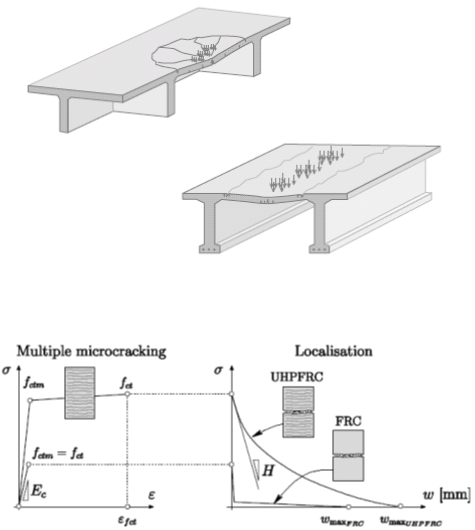|
Research on the behaviour of ultra-high performance fiber-reinforced
concrete members has demonstrated that thin members can be effective
without ordinary reinforcement thanks to their good deformation
capacity in bending and their excellent shear strength.
For elements with larger dimensions (starting at 100 mm), it is
advisable to use ordinary passive or even prestressed reinforcement.
In these cases, research showed that the strength of the reinforcement
can be superimposed to that of the fibers, as long as the behavior
of the fiber-reinforced concrete presents a hardening component
(localization of the cracks for strains exceeding the yield strain of
conventional reinforcement). However, it was observed that the localization
of cracks can lead to a sub-optimal behavior at the ultimate limit state,
because of a limited deformation capacity.
|

|
Reference publications
- Amin A., Foster S. J., Muttoni A., Derivation of the σ-w relationship for SFRC from prism bending tests, Structural Concrete, 2015, pp. 93-105.
- Jungwirth J., Muttoni A., Structural Behavior of Tension Members in Ultra High Performance Concrete, International Symposium on Ultra High Performance Concrete, Kassel, 2004.
- Spasojevic A., Redaelli D., Fernández Ruiz M., Muttoni A., Influence of tensile properties of UHPFRC on size effect in bending, Ultra High Performance Concrete (UHPC), Second International Symposium on Ultra High Performance Concrete, Kassel, Germany, 2008, pp. 303-310.
- Spasojevic A., Redaelli D., Muttoni A., Thin UHPFRC slabs without conventional reinforcement as light-weight structural elements, fib Symposium London 2009, London, UK, 2009, 8 p.
|
